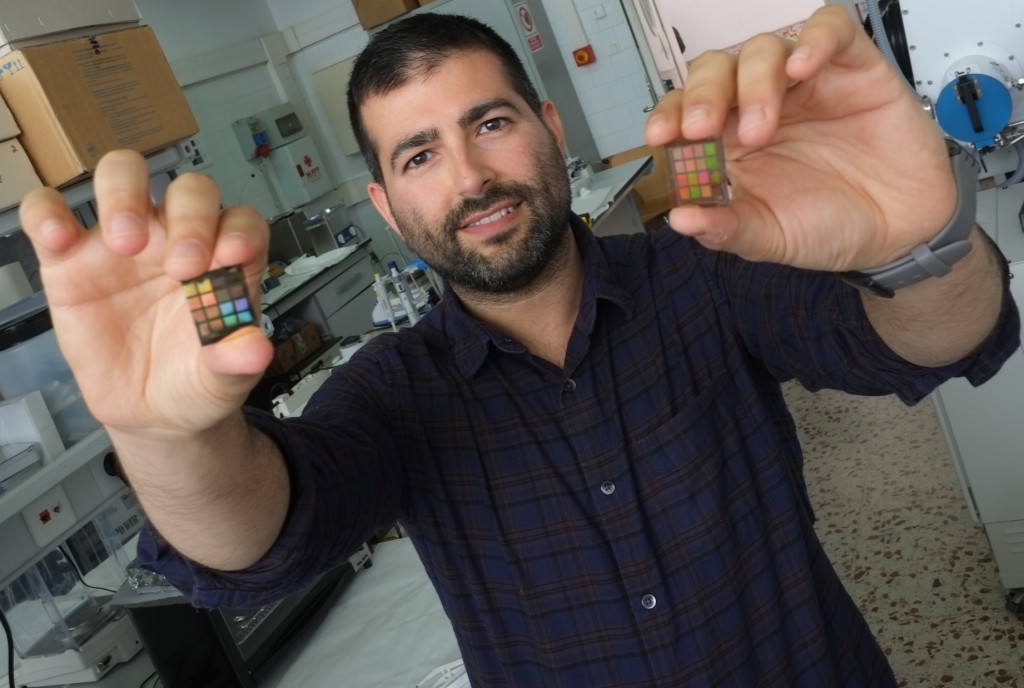13/05/2015
Agustín Mihi receives a Starting Grant from the European Research Council (ERC)
Agustín Mihi, a researcher with the Nephos researcher group at the URV’s Department of Electronic, Electrical and Automatic Engineering, has been awarded a Starting Grant by the European Research Council (ERC). The grant is worth 1.5 million euros over a period of five years and is for a project to create photonic structures for controlling the propagation of light in emerging technologies such as solar cells, sensors and the next generation of LEDs

Agustín Mihi, a researcher with the Nephos researcher group at the URV’s Department of Electronic, Electrical and Automatic Engineering, has been awarded a Starting Grant by the European Research Council (ERC). The grant is worth 1.5 million euros over a period of five years and is for a project to create photonic structures for controlling the propagation of light in emerging technologies such as solar cells, sensors and the next generation of LEDs
Starting Grants provide funding for promising researchers to carry out independent research. In 2014 Mihi was awarded a two-year Antoni Martí i Franquès postdoctoral contract by the Campus of International Excellence Southern Catalonis (CEICS). He will now receive a further 1.5 million euros from the ERC, which will be used to contract postdoctoral students and researchers and to buy new equipment for a new research group that he is in the process of creating.
The project aims to develop photonic structures for controlling the propagation of light in emerging technologies such as solar cells, sensors and the next generation of LEDs. The technology is moving towards the development of cheaper solar cells and sensors through roll-to-roll processing, that is, the process of creating cheaper electronic devices on a roll of flexible plastic or metal foil. The energy efficiency of these devices is improved by using a different, much smaller type of optical design which both increases the devices’ energy efficiency and can be incorporated into the manufacturing process without increasing the cost. To date, research has focused on finding alternatives to silicon that are cheaper but not necessarily more efficient. This is where Mihi’s project is different because it aims to improve cell efficiency and to develop sensors that are both cheaper and more efficient.
Mihi has conducted research into plasmonic and photonic structures (photonic crystals) which enable metals to be structured on a micro level so that they can interact with optical light. By structuring the metal to a width of less than a micron, the light is able to see it and interact with it, change direction, propagate more slowly or be concentrated in a particular manner. According to Mihi, the qualities of silicon make it hard to beat, but there will still be areas where flexible solar cells can be used, such as in fabrics or tattoos. Researchers have already developed tattoos with circuits integrated into the ink that enable the wearer to control a drone, for example, simply through hand movements.
Agustín Mihi graduated in Physics at the University of Valencia, where he started a doctoral degree that he then completed at the CSIC in Seville. The excellent research results that he produced during his four years of doctoral study led him to be awarded one of the four postdoctoral fellowships in materials sciences offered by the Beckman Institute of the University of Illinois, where over three years he perfected his knowledge of the techniques that he uses in his current research. He then went to work at the Institute of Photonic Sciences in Barcelona (ICFO), where he conducted research into emerging solar technologies. After some time he decided that he wanted to conduct his own research projects and was finally able to do so when he was awarded the Antoni Martí i Franquès postdoctoral contract. He is currently a member of the Nephos research group, which studies nanoelectronics and photonic systems at the URV’s Department of Electronic, Electrical and Automatic Engineering.
